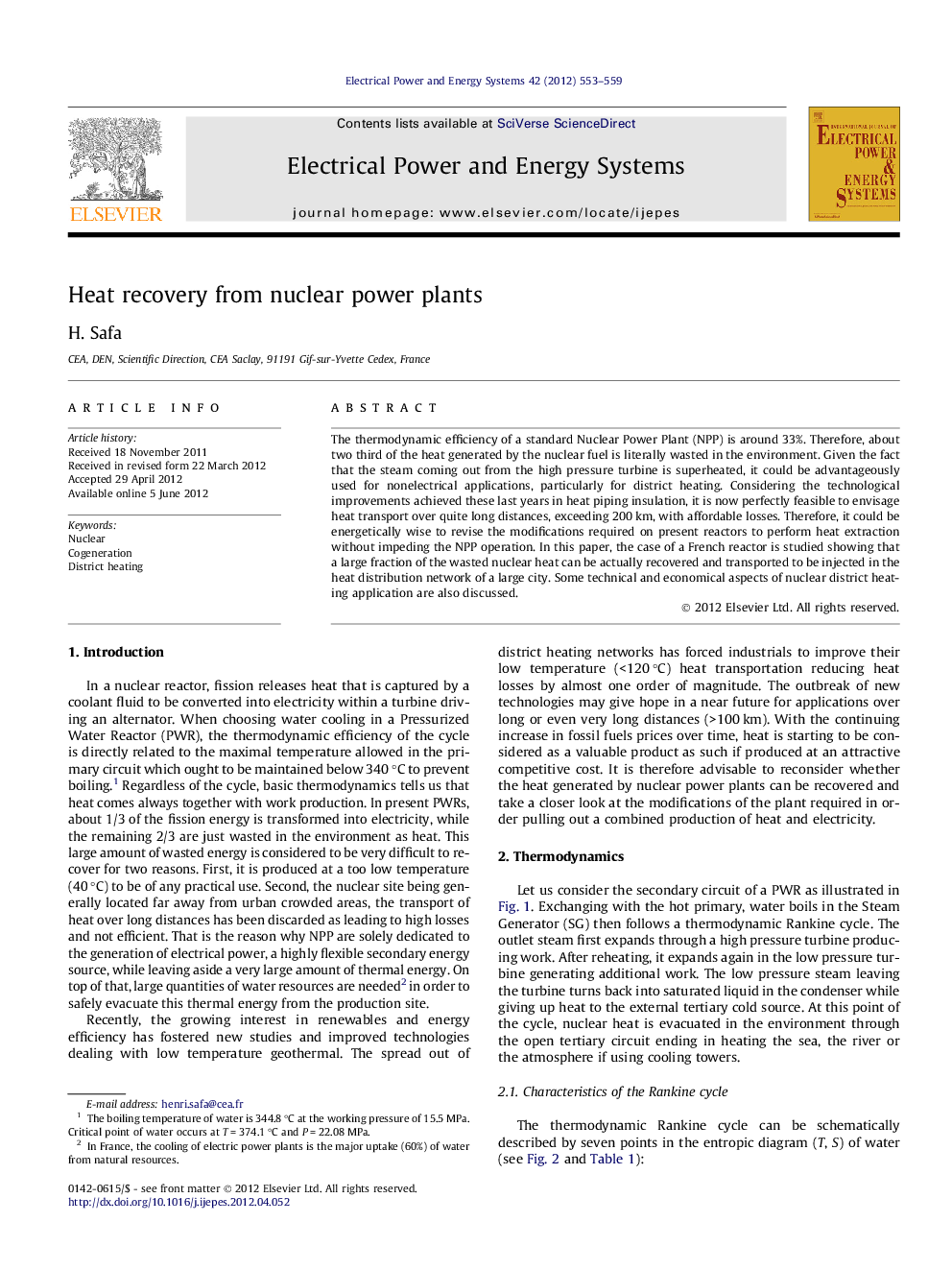| Article ID | Journal | Published Year | Pages | File Type |
|---|---|---|---|---|
| 399800 | International Journal of Electrical Power & Energy Systems | 2012 | 7 Pages |
The thermodynamic efficiency of a standard Nuclear Power Plant (NPP) is around 33%. Therefore, about two third of the heat generated by the nuclear fuel is literally wasted in the environment. Given the fact that the steam coming out from the high pressure turbine is superheated, it could be advantageously used for nonelectrical applications, particularly for district heating. Considering the technological improvements achieved these last years in heat piping insulation, it is now perfectly feasible to envisage heat transport over quite long distances, exceeding 200 km, with affordable losses. Therefore, it could be energetically wise to revise the modifications required on present reactors to perform heat extraction without impeding the NPP operation. In this paper, the case of a French reactor is studied showing that a large fraction of the wasted nuclear heat can be actually recovered and transported to be injected in the heat distribution network of a large city. Some technical and economical aspects of nuclear district heating application are also discussed.
► The paper is a study on nuclear cogeneration. ► Wasted heat from nuclear reactors can be easily recovered. ► The recovered heat may be transported over long distances exceeding 100 km. ► Main technical issues of the transport line are piping size and pumping power. ► Nuclear cogeneration is energetically beneficial and reduces carbon emissions.
